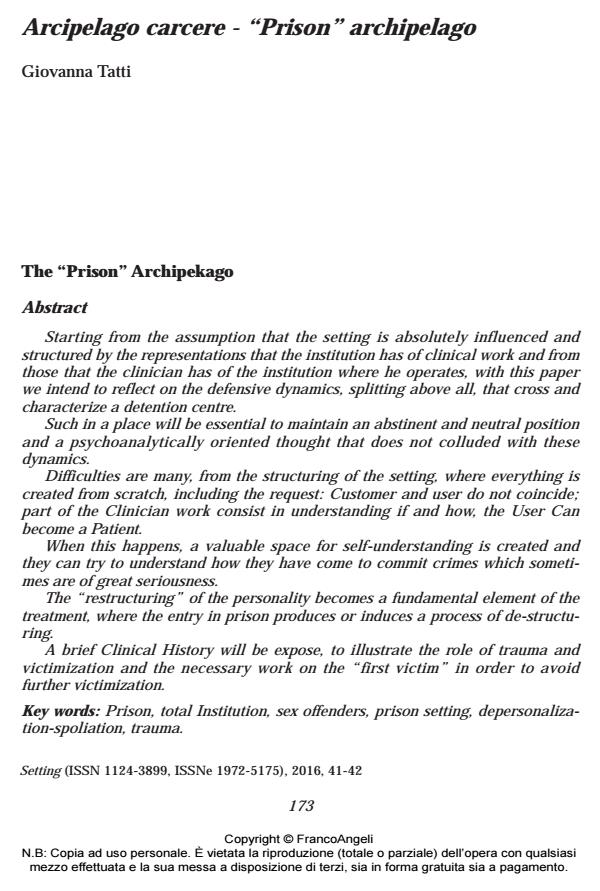The "Prison" Archipekago
Journal title SETTING
Author/s Giovanna Tatti
Publishing Year 2018 Issue 2016/41-42
Language Italian Pages 17 P. 173-189 File size 440 KB
DOI 10.3280/SET2016-041008
DOI is like a bar code for intellectual property: to have more infomation
click here
Below, you can see the article first page
If you want to buy this article in PDF format, you can do it, following the instructions to buy download credits

FrancoAngeli is member of Publishers International Linking Association, Inc (PILA), a not-for-profit association which run the CrossRef service enabling links to and from online scholarly content.
Starting from the assumption that the setting is absolutely influenced and structured by the representations that the institution has of clinical work and from those that the clinician has of the institution where he operates, with this paper we intend to reflect on the defensive dynamics, splitting above all, that cross and characterize a detention centre. Such in a place will be essential to maintain an abstinent and neutral position and a psychoanalytically oriented thought that does not colluded with these dynamics. Difficulties are many, from the structuring of the setting, where everything is created from scratch, including the request: Customer and user do not coincide; part of the Clinician work consist in understanding if and how, the User Can become a Patient. When this happens, a valuable space for self-understanding is created and they can try to understand how they have come to commit crimes which sometimes are of great seriousness. The "restructuring" of the personality becomes a fundamental element of the treatment, where the entry in prison produces or induces a process of de-structuring. A brief Clinical History will be expose, to illustrate the role of trauma and victimization and the necessary work on the "first victim" in order to avoid further victimization.
Keywords: Prison, total Institution, sex offenders, prison setting, depersonalization- spoliation, trauma.
Giovanna Tatti, Arcipelago carcere - "Prison" archipelago in "SETTING" 41-42/2016, pp 173-189, DOI: 10.3280/SET2016-041008